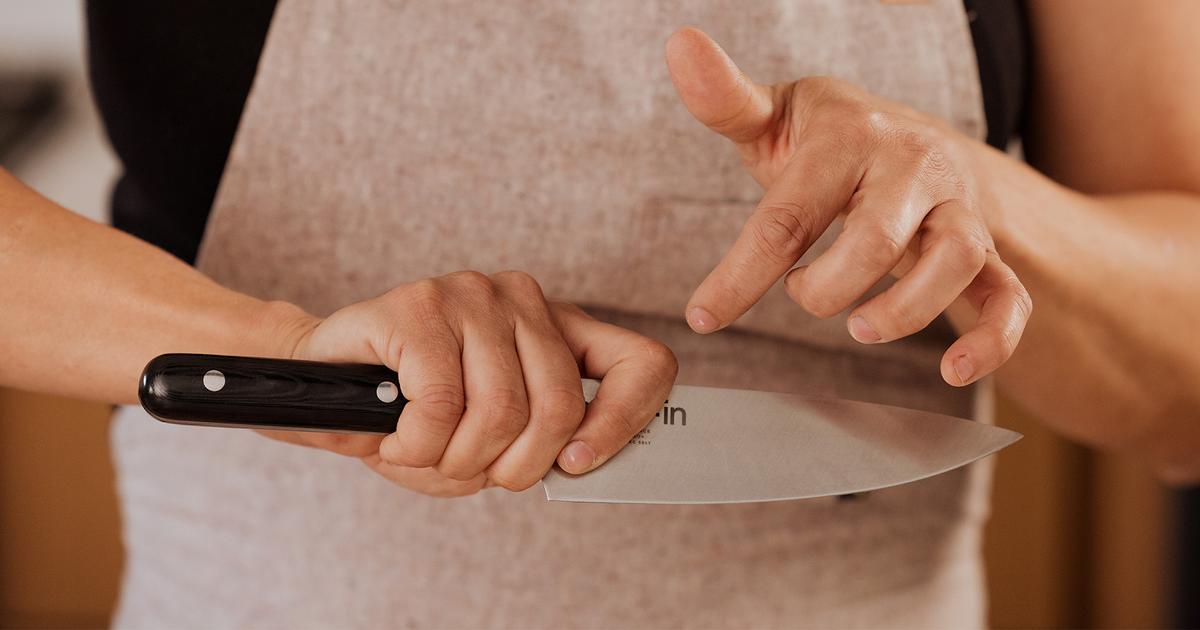For kitchen professionals, the pursuit of the perfect knife is a journey filled with precision and passion. A crucial aspect of this quest is understanding German knife edge retention. Renowned for their durability and sharpness, German knives are a staple in many kitchens worldwide. But what exactly makes these knives stand out in terms of edge retention?
German knife edge retention refers to a knife's ability to maintain its sharpness over time, even with regular use. This characteristic is essential for chefs and culinary enthusiasts who rely on precision tools to perfect their craft. The secret behind this remarkable feature lies in the steel composition, manufacturing processes, and meticulous craftsmanship that define German knives. For those looking to delve deeper into the world of German knives, resources such as the comparison of German and Japanese knife steel can offer valuable insights.

The Steel Story: What Makes German Knives Special?
At the heart of every German knife is its steel. German knives typically use a high-carbon stainless steel blend, which contributes to their robustness and longevity. The high carbon content ensures that the knives can be honed to a razor-sharp edge, while the stainless component provides resistance to rust and corrosion. This combination is what gives German knives their edge retention capabilities, making them a popular choice among professionals.
Moreover, the manufacturing process is crucial. German knives are often forged rather than stamped. This means they are made from a single piece of steel, heated and then shaped, resulting in a denser and more durable blade. This forging process, coupled with precision grinding, ensures that the edge remains sharp for longer periods. To explore more about the advantages of German knives, you can visit discussions on why German knives are worth the investment.
Maintenance: Keeping the Edge Alive
While German knives boast excellent edge retention, maintaining that edge requires proper care. Regular honing is essential to keep the edge aligned and sharp. Honing does not sharpen the blade but rather realigns it, preventing the need for frequent sharpening. Understanding the balance between honing and sharpening is crucial for maintaining the longevity of your knife. You can learn more about knife balance and weight, which plays a role in handling and maintenance.
Sharpening, on the other hand, involves removing metal to create a new edge. This process should be done less frequently, depending on the knife's usage. Professional chefs often recommend using a whetstone for sharpening, as it offers more control and precision compared to electric sharpeners. For more details on knife care, the Zwilling knife guide is an excellent resource.
Comparing with Other Knives
When comparing German knives to other types, such as Japanese knives, one significant difference lies in the edge angle and the steel's hardness. German knives typically have a more robust edge angle, making them more suitable for heavier tasks like chopping through bones or dense vegetables. This robustness contributes to their edge retention, as the edge does not chip or dull easily under pressure.
Japanese knives, while known for their sharpness, often have a finer edge and require more delicate handling. They are excellent for precision tasks but may not hold their edge as long under heavy use. For those interested in the nuances between these knives, the article on German vs. Japanese knife steel offers a detailed comparison.
Choosing the Right German Knife
Selecting the perfect German knife involves understanding your specific needs in the kitchen. For chefs who perform a variety of tasks, a versatile chef's knife with good edge retention is essential. Such knives are often recommended for their ability to handle everything from slicing and dicing to more demanding tasks.
For those on a budget, there are still quality options available. The guide on best budget German knives can help you find a knife that suits your needs without breaking the bank. Additionally, purchasing from reputable sources ensures that you acquire a genuine product, which can be explored further in the article on buying German knives online.

FAQ
Why are German knives preferred by chefs?
German knives are favored for their durability, edge retention, and versatility, making them ideal for a wide range of culinary tasks.
How often should I sharpen my German knife?
The frequency of sharpening depends on usage, but generally, honing should be done regularly, while sharpening can be done every few months.
What is the difference between honing and sharpening?
Honing aligns the blade's edge without removing material, while sharpening involves grinding away metal to create a new edge.


























